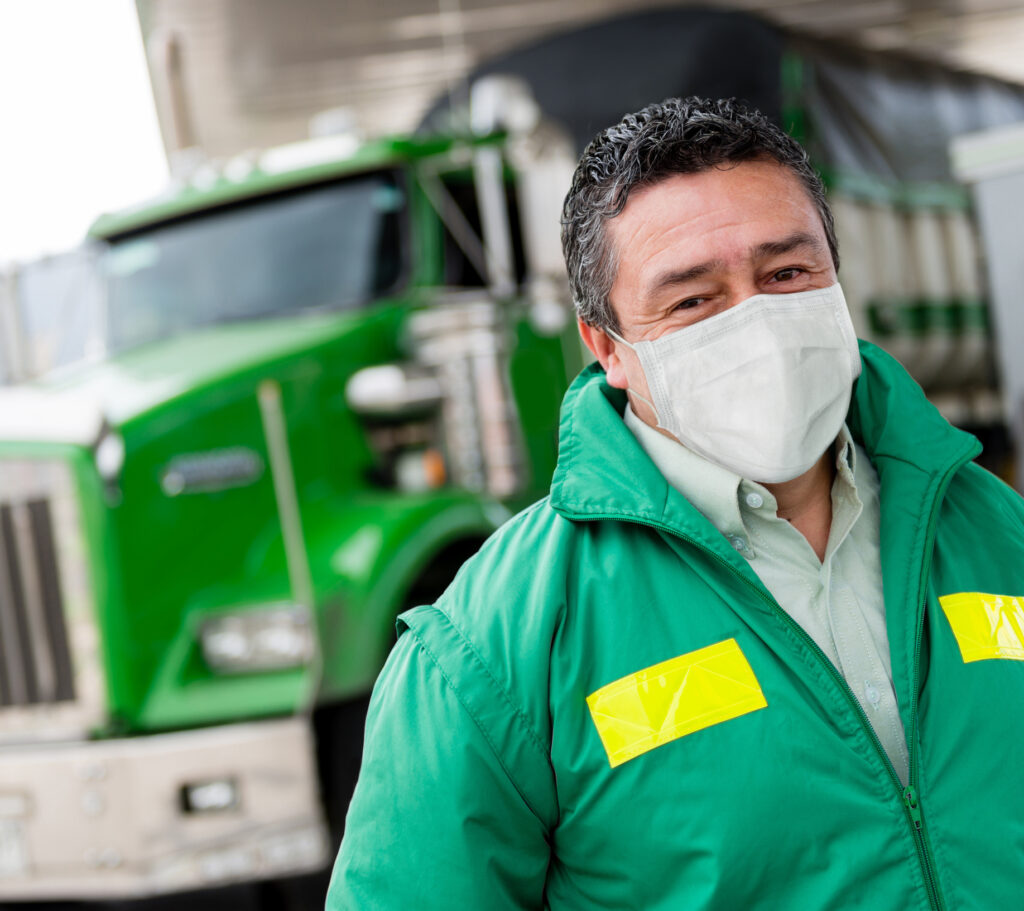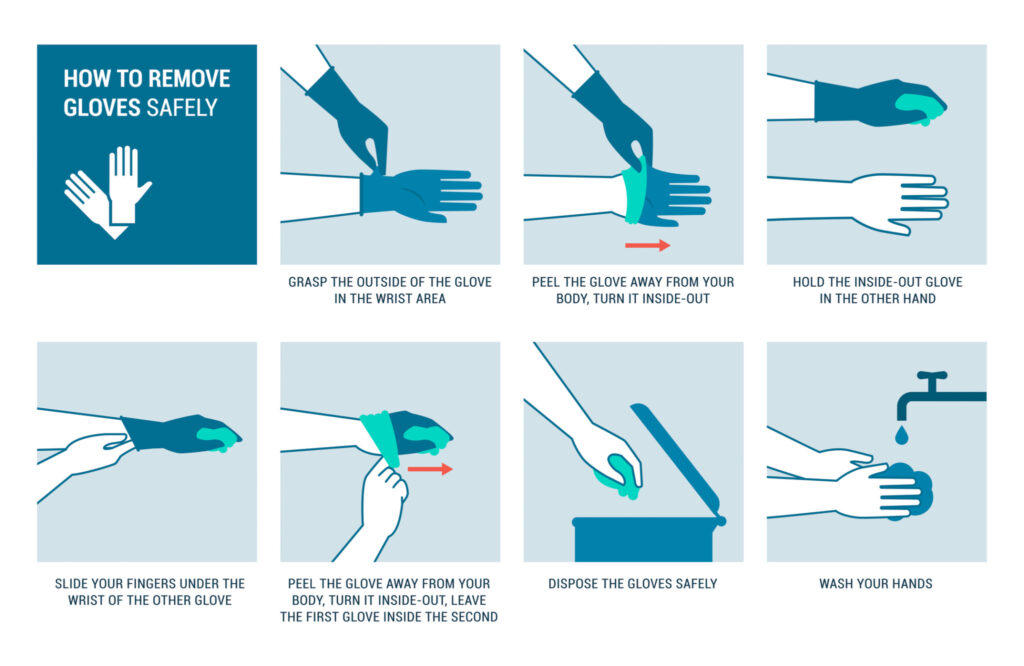A truck driver’s guide to masks, gloves and cleaning during Covid-19
TORONTO, Ont. – Loads might be delivered with a smile, but in the days of Covid-19 those smiles are increasingly covered by face masks.
The Council of Ministers Responsible for Transportation and Highway Safety is recommending a series of best practices when it comes to masks, gloves and safety protocols for transportation employees such as truck drivers.

“We are committed to keeping Canada’s transportation workers, and those who rely on our multimodal transportation system, safe and healthy,” said Transport Minister Marc Garneau, when the guiding principles were released earlier this week, building on guidance from the Canadian Council of Motor Transport Administrators.
Here is an example of the tips and guidance found in the related documents:

- When to wear a mask – When the rate of community transmission calls for it, commercial drivers are encouraged to wear a non-medical mask or face covering when they can’t keep two meters away from others, when they are required to exit a vehicle for something like a delivery and can’t be physically distant from others, or when directed by enforcement officers. The Canada Border Services Agency, for example, requires truck drivers who cross the border to wear such masks.
- Choosing an effective mask – N-95 masks that are used for working with dust, mold or in medical emergencies are to be left in the hands of healthcare workers. But other medical masks can still create a barrier from respiratory droplets that can be released through talking, coughing, or sneezing. Non-medical masks or face coverings can also protect others from coming into contact with respiratory droplets. For instructions on how to make such a mask, click here.
- Hand washing vs. hand sanitizer – Washing hands with plain soap and water is still the preferred method of hand hygiene because the mechanical action helps to remove the virus. Use soap and warm water for at least 20 seconds. And when drying hands, disposable paper towels are preferred. When that’s not possible, use an alcohol-based sanitizer, preferably with an alcohol concentration above 70%, the council of ministers says. Just keep in mind that it may not work when there is organic material on your hands, such as after using the toilet.
- When to wear protective gloves – Disposable latex, vinyl, synthetic polymer and nitrile gloves are recommended when workers might contact an ill person or a contaminated object. But they’re not routinely recommended for handling documents, or when there’s the opportunity to effectively wash hands or use an alcohol-based hand sanitizer.
Truck drivers are encouraged to wear gloves or cover their hands when pumping fuel, touching service station door handles, or when handling any products for routine maintenance activities – such as jugs of washer fluid or engine oil. “Commercial vehicle drivers should wash their hands or apply hand sanitizer immediately thereafter, if available,” the council adds. - Combine eye protection with masks to fully protect against respiratory droplets – “In the particular context of Covid-19, masks and face coverings offer varying degrees of protection against infection,” the council says. “The appropriate form of PPE for a given scenario is determined by the operating environment.”
- Know how to use all the PPE you have – “Prior to using a respirator or mask of any kind, users should be familiar with how to use it (put it on, take it off, discard it), including its limitations and when to change it (eg, when damp),” it adds.
- Keep your hands off your face – Self-contamination is a risk when touching your face or the PPE with exposed hands or gloves while wearing the equipment.
- How to wipe down the truck cab – “Commercial vehicle drivers are encouraged to use disposable gloves when cleaning high-touch surfaces in their vehicles,” the council says. “Soiled disposable gloves should be discarded in lined garbage receptacles, or stored in sealed disposable bags until they can be properly disposed of if a garbage bin is not available.”
- How to choose a cleaner — Health Canada recommends a series of hard-surface disinfectants for cleaning high-touch surfaces in truck cabs. They should be applied and wiped off with disposable cloths that are discarded in lined garbage bins or stored in sealed plastic bags until their final disposal. Any reusable cloths should be washed using laundry soap and hot water at 60-90 Celsius.
Looking for more information on cleaning cabs? See our report from Jim Park.
Have your say
This is a moderated forum. Comments will no longer be published unless they are accompanied by a first and last name and a verifiable email address. (Today's Trucking will not publish or share the email address.) Profane language and content deemed to be libelous, racist, or threatening in nature will not be published under any circumstances.